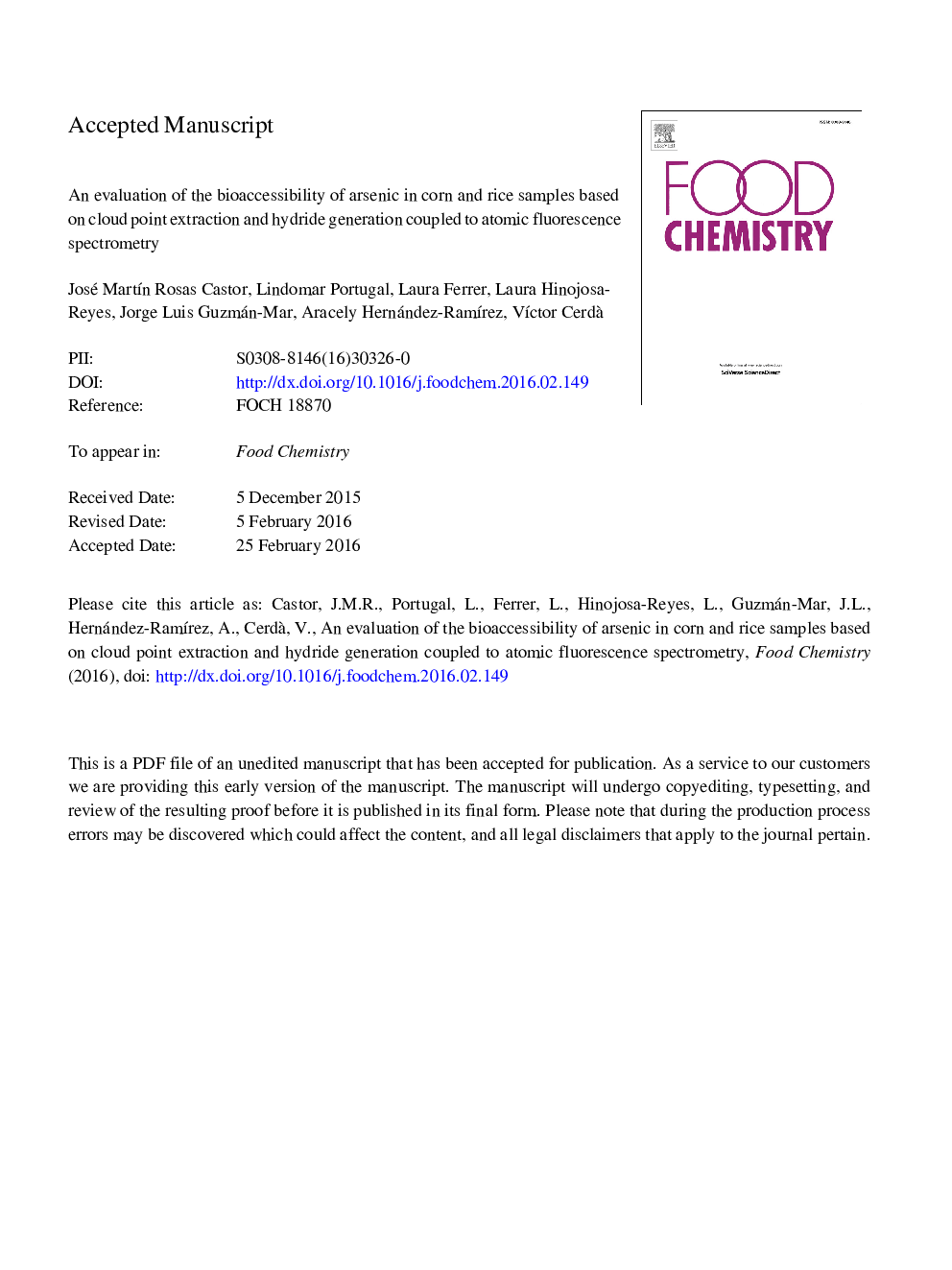| Article ID | Journal | Published Year | Pages | File Type |
|---|---|---|---|---|
| 7589204 | Food Chemistry | 2016 | 36 Pages |
Abstract
A simple, inexpensive and rapid method was proposed for the determination of bioaccessible arsenic in corn and rice samples using an in vitro bioaccessibility assay. The method was based on the preconcentration of arsenic by cloud point extraction (CPE) using o,o-diethyldithiophosphate (DDTP) complex, which was generated from an in vitro extract using polyethylene glycol tert-octylphenyl ether (Triton X-114) as a surfactant prior to its detection by atomic fluorescence spectrometry with a hydride generation system (HG-AFS). The CPE method was optimized by a multivariate approach (two-level full factorial and Doehlert designs). A photo-oxidation step of the organic species prior to HG-AFS detection was included for the accurate quantification of the total As. The limit of detection was 1.34 μg kgâ1 and 1.90 μg kgâ1 for rice and corn samples, respectively. The accuracy of the method was confirmed by analyzing certified reference material ERM BC-211 (rice powder). The corn and rice samples that were analyzed showed a high bioaccessible arsenic content (72-88% and 54-96%, respectively), indicating a potential human health risk.
Related Topics
Physical Sciences and Engineering
Chemistry
Analytical Chemistry
Authors
José MartÃn Rosas Castor, Lindomar Portugal, Laura Ferrer, Laura Hinojosa-Reyes, Jorge Luis Guzmán-Mar, Aracely Hernández-RamÃrez, VÃctor Cerdà ,
